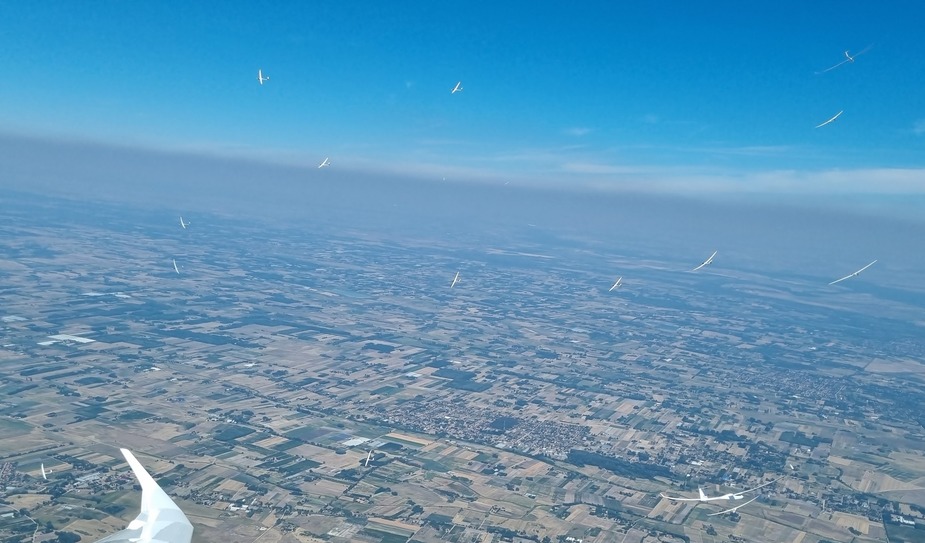gallois wrote:
2/ Are there any metal gliders?
L-13 Blanik – more than 3000 produced, L-33 Solo
Thanks for all the responses, I am learning a lot
I had no idea that in air collisions are such a common occurrence.
I was aware that gliders in the UK have long been allowedbto fly in cloud but IIUC that is a fairly recent thing in France.
I still find it amazing that an aircraft with an MTOW of 475kg can tow a 400kg (someone mentioned this weight earlier) into the air, off grass on small or non existant wheels at ISA +20°. I know how difficult it is to tow a trailer full of logs with a 2000cc car on tamac. It takes quite a pull to get going and it snatches at times after that. So at what point does the lift an weight cancel each other out so that the drag of the glider allows the drag on the tow air aft to be low enough to take off and climb? And is this point affected by temperature.
Returning to the topic of parachutes. I often go as ballast in the tandem 2 seater. I am not particularly big (average for France) but I notice how little space I have. Following a collision, in my mind I would expect to be at a weird angle of some sort and whilst I can see how you might jettison the canopy I can not for the life of me see how I would manage to stand up and jump in the time I anticipate would be available if the accident occurs between say 3k and 5k feet. Especially avoiding being hit by a part of the airframe. Is there a trick to it?
gallois wrote:
Is there a trick to it?
Other than jumping, there are certain ways to bail out of an aeroplane which is controllable. One is to jettison the canopy, undo your harness, and roll inverted. Another is to jettison the canopy, undo your harness, stand up, and kick the stick forwards.
In a more urgent situation the usual advice is to somehow clamber out and throw oneself towards the trailing edge of the wing, which should see you pass down between the wing and the tailplane.
If the craft has really come apart following the collision it will come down to separating yourself from it whichever way you can. In a glider-type cockpit I can well imagine that might involve sort of rolling out over the edge, because as you say if it’s in an extreme attitude (nose vertically down seems probable) then there isn’t going to be much prospect of standing, and standing tends to be a pre-requisite for jumping.
gallois wrote:
I can not for the life of me see how I would manage to stand up and jump in the time I anticipate would be available if the accident occurs between say 3k and 5k feet.
When I was training as a glider pilot, I was told that if I was outside the aircraft at 700 feet I would make it. These parachutes open very rapidly – they are not sports parachutes.
gallois wrote:
Especially avoiding being hit by a part of the airframe. Is there a trick to it?
In free fall you accelerate quite fast away from the plane. I don’t think this is more dangerous than staying put when you’re in a situation where you seriously consider bailing out. By the way this is the reason why I wouldn’t chose a automatic release but rather a manual one, so you can choose to fall for three seconds before you pull, to get away from the plane. But then I did this as a hobby when I was young.
There was a bad accident in 2018, when a 15 year old had to bail out due to non responsive controls. Last I heard was that he didn’t pull the ripcord. I can’t find the BFU investigation to verify, but nonetheless the argument that an automatic release is better for passengers has merit in my opinion. Pulling to early in a panic can also be dangerous.
gallois wrote:
I had no idea that in air collisions are such a common occurrence.
the distance between gliders in a lift is ca 50meters, often less. Pic taken during xgliding world championship in Hungary ..

q. how I would manage to stand up and jump
One common collision scenario is for the wing of 1 glider to take out the tail plane of the other. Negative g follows and the issue is to reach the belt buckle rather than getting out.
how I would manage to stand up and jump
One common collision scenario is for the wing of 1 glider to take out the tail plane of the other. Negative g follows and the issue is to reach the belt buckle rather than getting out.
Not really a “near miss”, was it… 